Artificial Intelligence Survey: Scientists' Use in Teaching and Research
This section reports on scientists attitudes toward and experience using generative AI in teaching and research. We also asked about scientists’ intentions to use generative AI in the future.
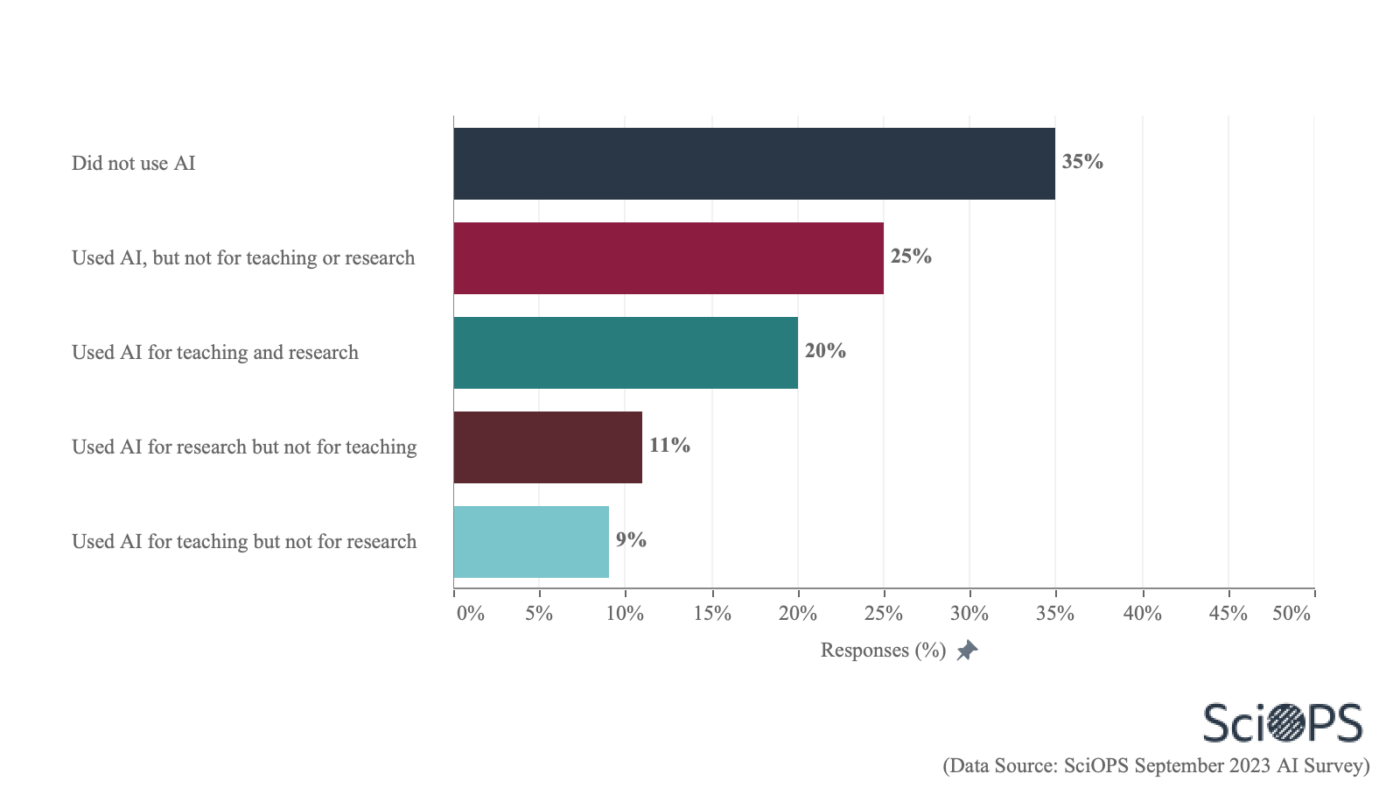
Finding
We identified five groups of scientists with varying degree of generative AI use. More than one-third of scientists (35%) reported that they have not personally used AI. One-quarter (25%) reported that they have used AI, but not for teaching or research, while 20% use AI for both teaching and research, 11% research only, and 9% for teaching only.
Question

Finding
Most scientists (65%) have used a generative AI product (e.g., ChatGPT, Bard, Stable Diffusion, Midjourney, DALL-E).
Question
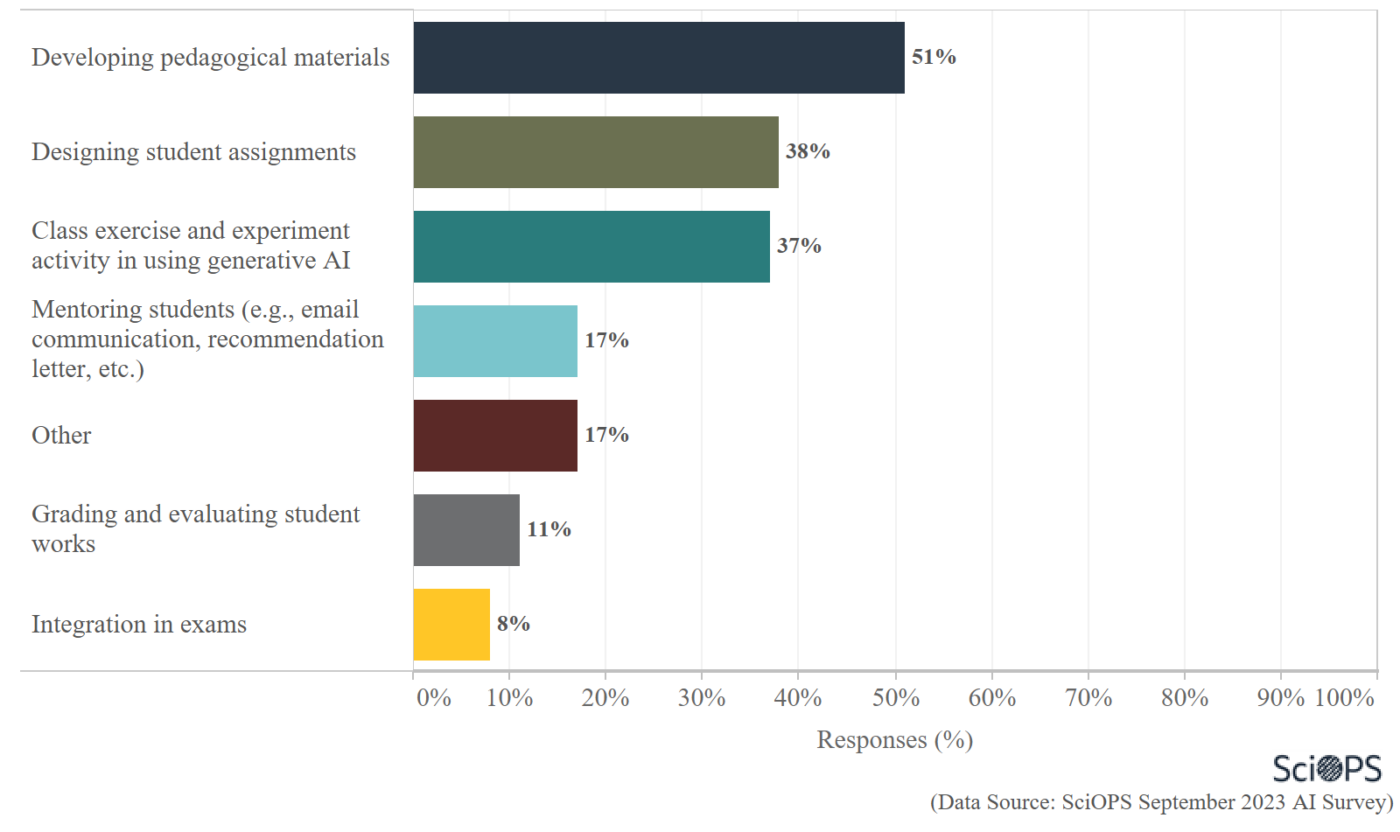
Finding
Among 149 weighted respondents to this question, more than half (56%) reported that they have never used generative AI for any teaching activity. Among the remaining 65 respondents who have used generative AI for teaching activities, the top 3 activities they use it for include developing pedagogical materials (51%), designing student assignments (38%), and doing class exercise and experiment activity (37%).
Question
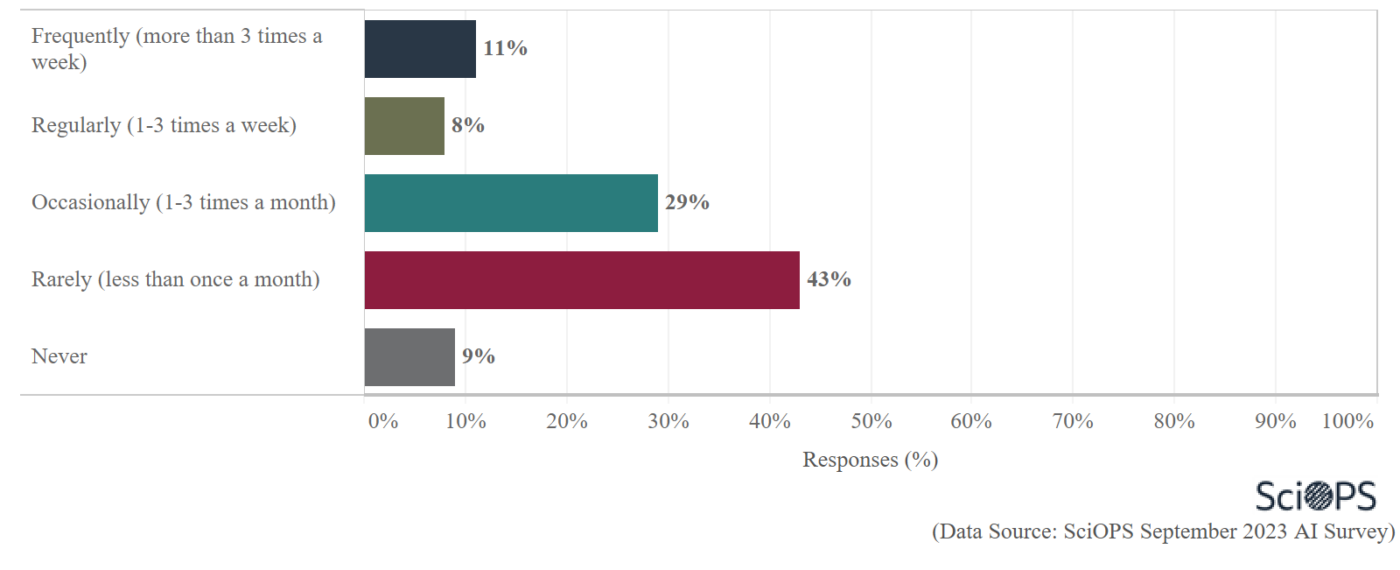
Finding
Among those who use generative AI for teaching, 43% rarely use it, 29% use it occasionally, and 19% use it on a frequent basis.
Question
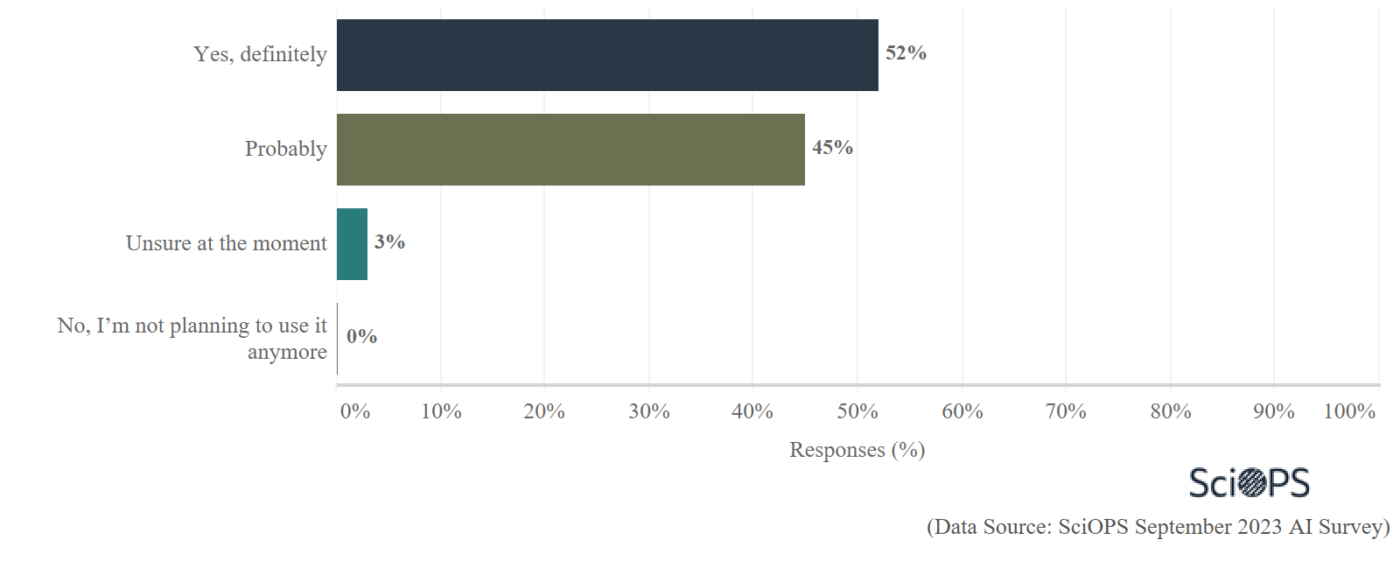
Finding
We asked about future intentions to use generative AI for teaching for both those who have used it before and those who have not.
Among respondents who have used generative AI in teaching, almost all (97%) are planning to continue to use it in teaching in the future.
Question
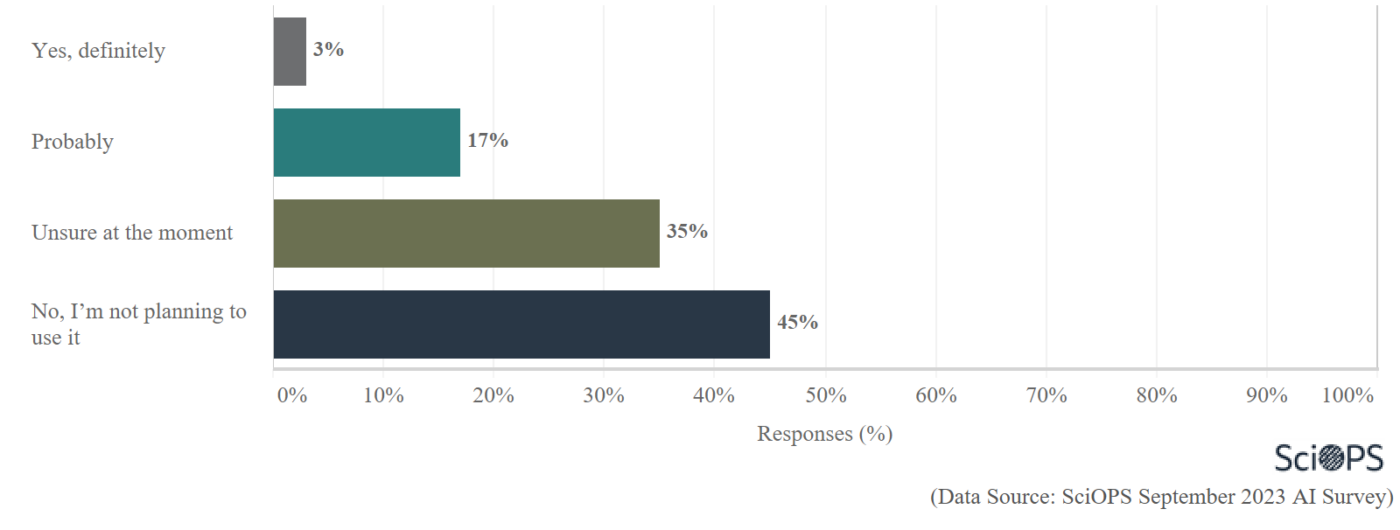
Finding
Among respondents who have never used generative AI in teaching, almost half (45%) are not planning to use it in the future for teaching activities, while 35% are unsure.
Question
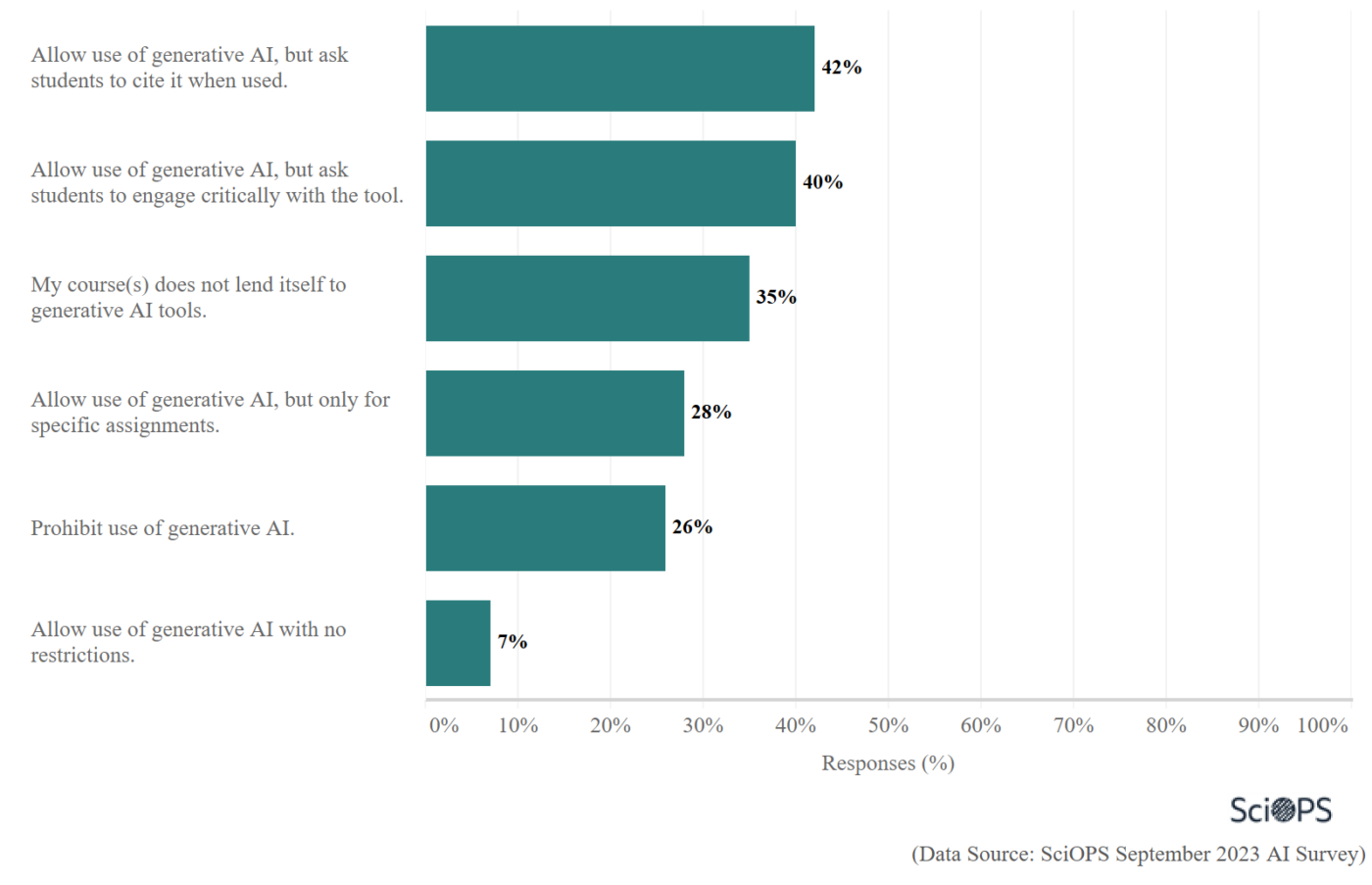
Finding
Similar proportion of respondents indicated they allow the use of generative AI but ask students to cite it (42%) or to engage critically with it (40%) in their course syllabi. A little over one third (35%) of respondents to the question responded that their course(s) does not lend itself to generative AI tools. 28% allow use of generative AI only for specific assignments. A little over one fourth (26%) of scientists prohibited the use of generative AI in their course syllabi. Only 7% of the respondents allow unrestricted use of generative AI.
Question
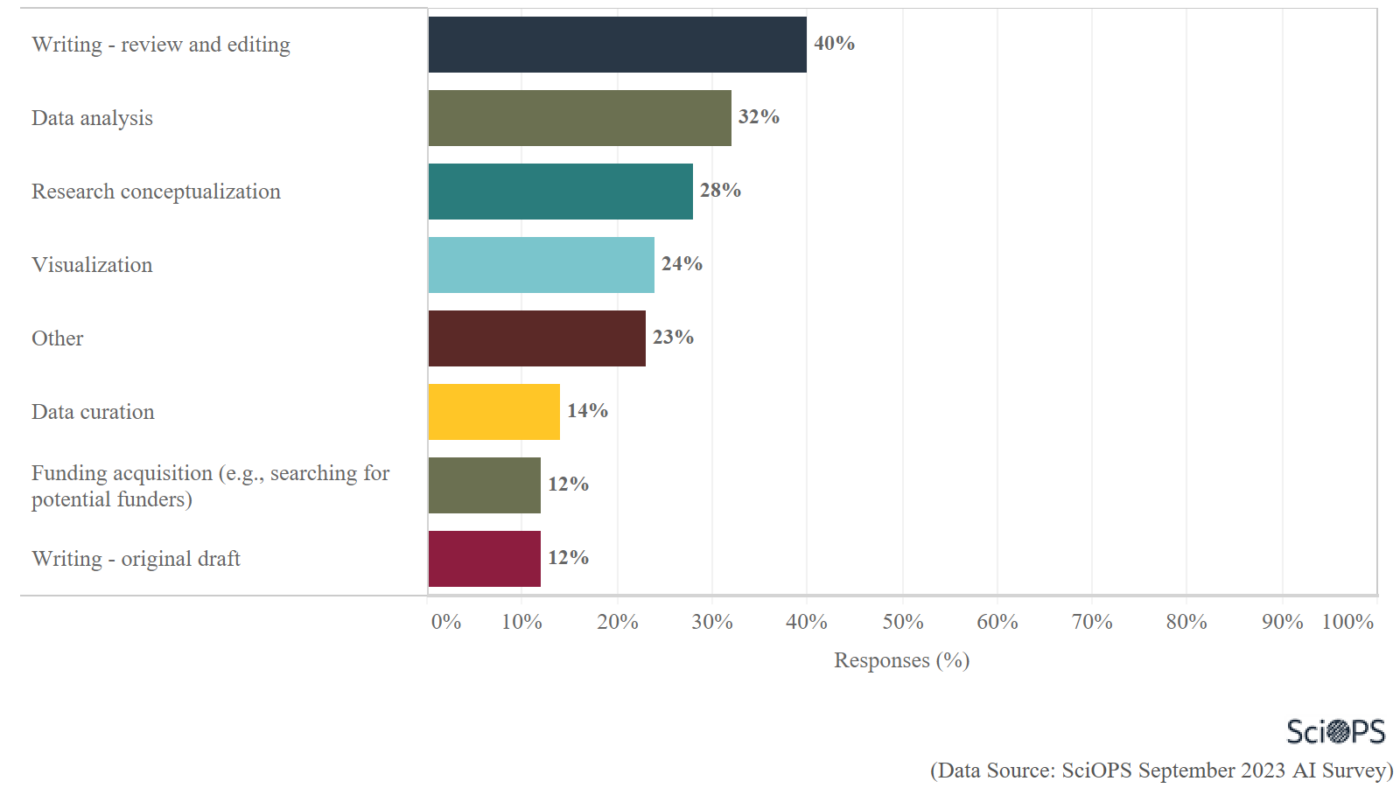
Finding
Among the remaining 78 respondents who have used generative AI for research activities, the top 3 activities they use it for include writing-reviewing and editing (40%), data analysis (32%), and research conceptualization (28%).
Question
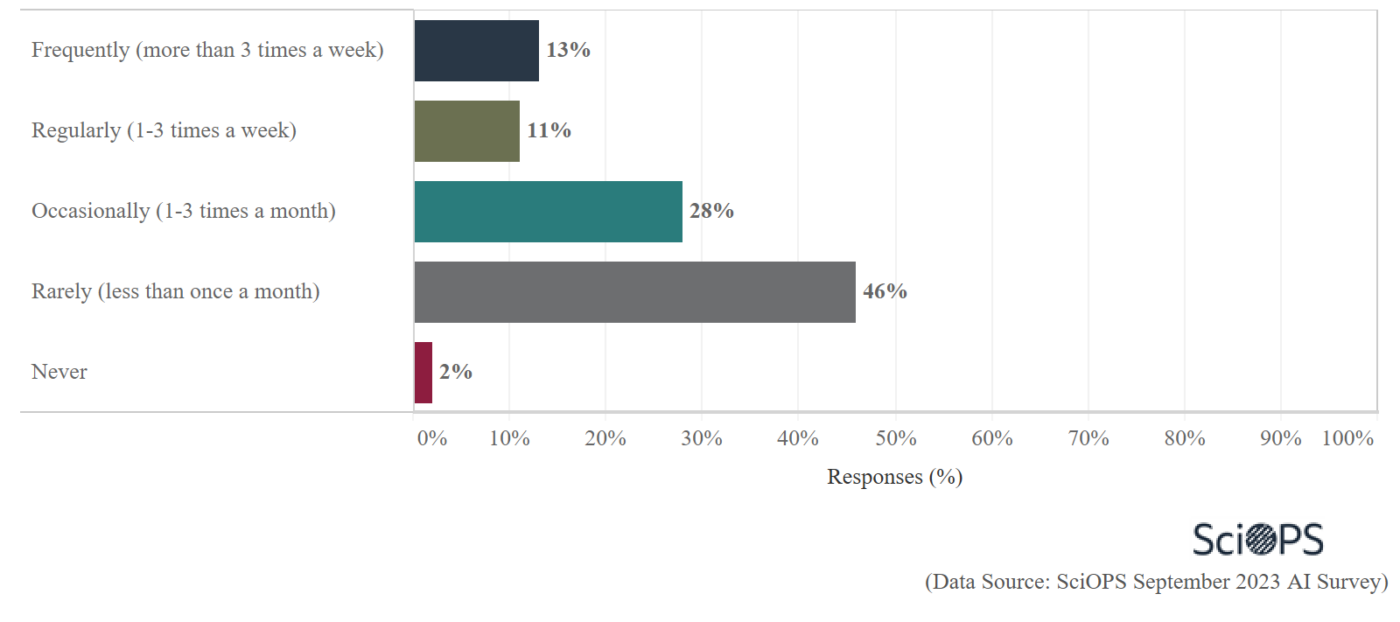
Finding
Among the scientists who reported using generative AI for research activities, nearly half (46%) reported that they use it less than once a month, while 28% reported they have used it 1-3 times a month, and about one-quarter (24%) use it more frequently.
Question

Finding
For those who use generative AI in their research activities, the majority (84%) will definitely or probably continue using it for research in the future.
Question

Finding
For those who have never used generative AI in their research activities, approximately 23% reported they will definitely or probably use it in their research activities in the future, while around 41% reported they are not planning to use it. The remaining 37% are unsure.
This national survey of academic scientists in the US was conducted by the Center for Science, Technology and Environmental Policy Studies (CSTEPS) at Arizona State University. The survey was approved by the Institutional Review Boards at Arizona State University.
The sample for this survey was selected from our SciOPS panel. The SciOPS panel was recruited from a random sample of PhD-level faculty in six fields of science. Contact information of faculty in the fields of biology, geography, civil and environmental engineering, chemistry, and computer and information science and engineering was collected from randomly selected Carnegie-designated Research Extensive and Intensive (R1) universities in the United States (US).
Contact information for academic scientists, social scientists and engineers in the field of public health was collected from all Council on Education for Public Health (CEPH) accredited public health schools. The full sample frame for recruiting the SciOPS panel includes contact information for 18,505 faculty members of which 1,366 agreed to join the SciOPS panel. This represents an AAPOR recruitment rate (RECR) of 7.5% (RR4).
Sample weighting and precision: The sample of respondents for this survey was weighted by the inverse of selection probabilities and post-stratified probabilities by gender, academic fields, and academic ranks to represent the full sample frame for recruiting SciOPS panel members as closely as possible. A conservative measure of sampling error for questions answered by the sample of respondents is plus or minus 6 percentage points.
